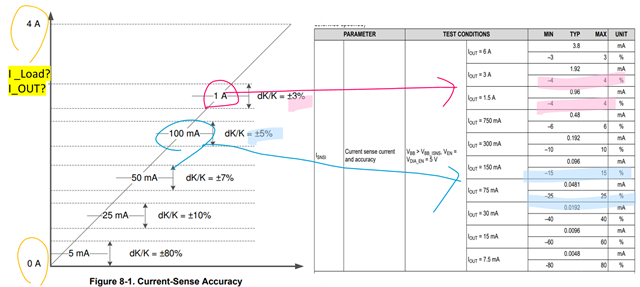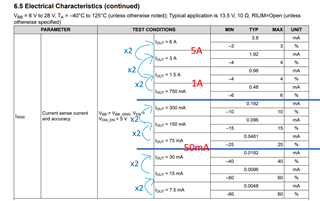Tool/software:
Hello,
I have a few questions like below.
1. Is it I_out = I_load in Datasheet ? Regarding the 6.5 Electrical Characteristics table , could I understand that there will be different Error% under different I_LOAD conditions?
2. Will the Ksns (Current sense ratio) vary with different I_LOAD?
3. My I_load conditions are 0.05A/1A/5A.The values provided in Figure 8-1 don't seem to match with Table 6.5. Based on my I_LOAD conditions, how can I determine the corresponding Error%?


Thank you!
Best Regards,
YuFang Chen


